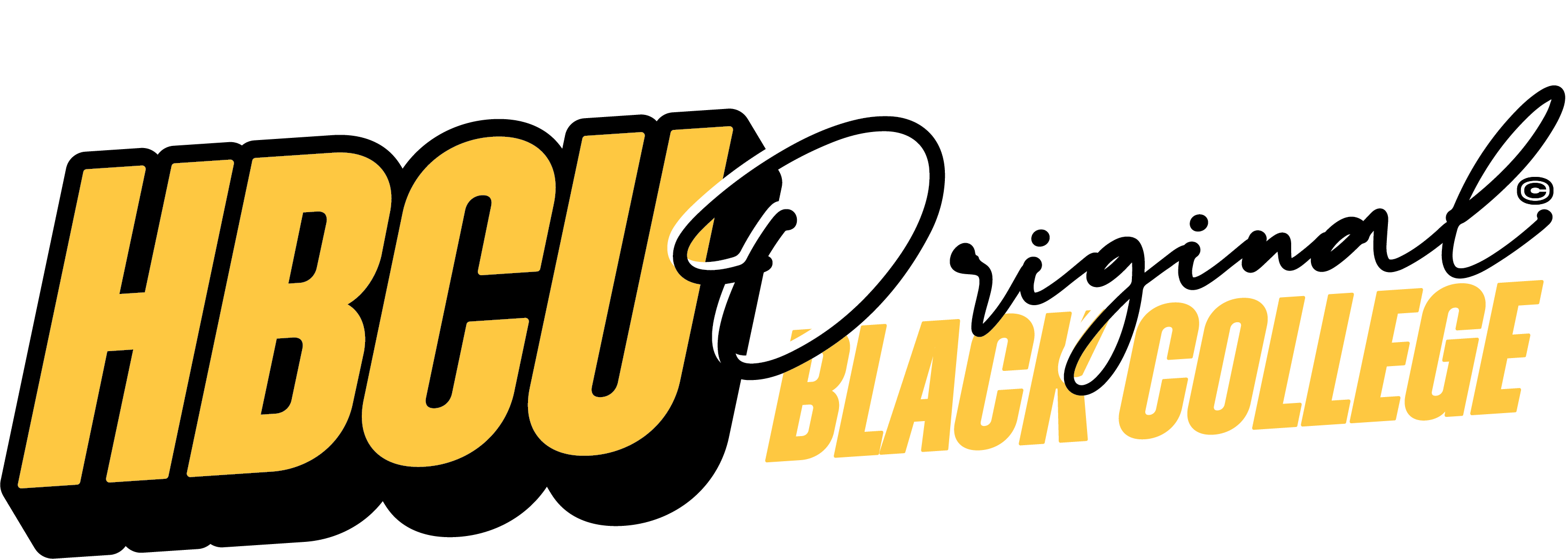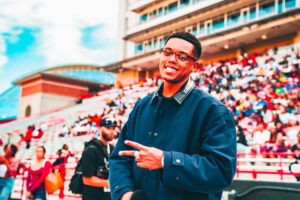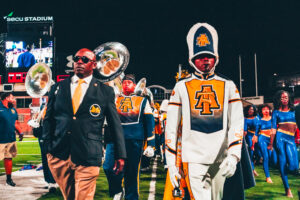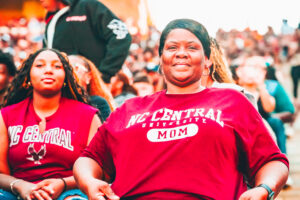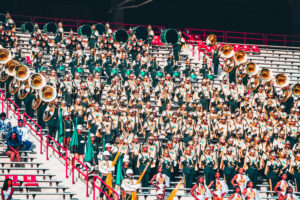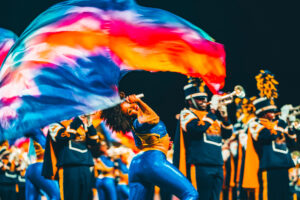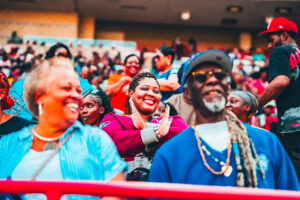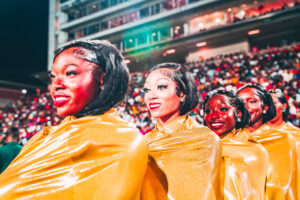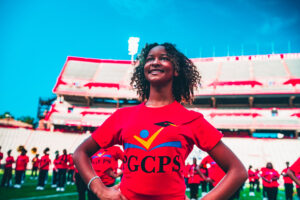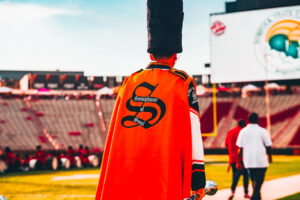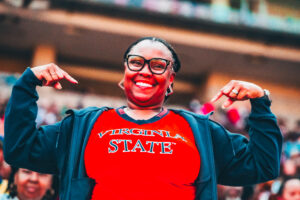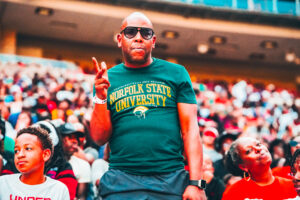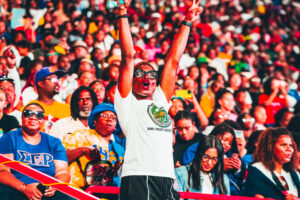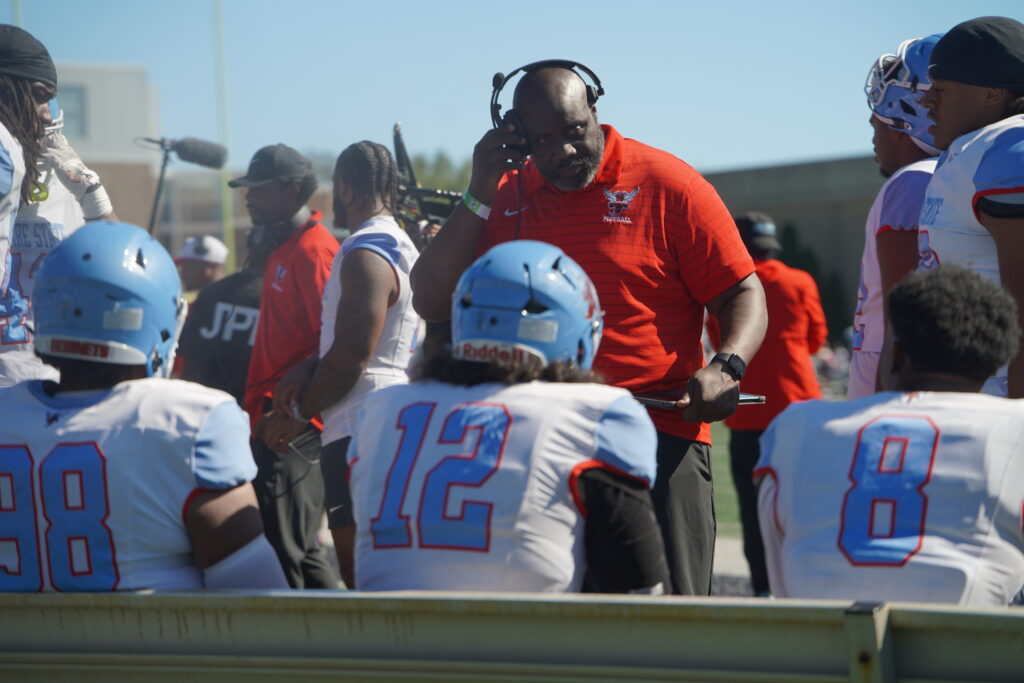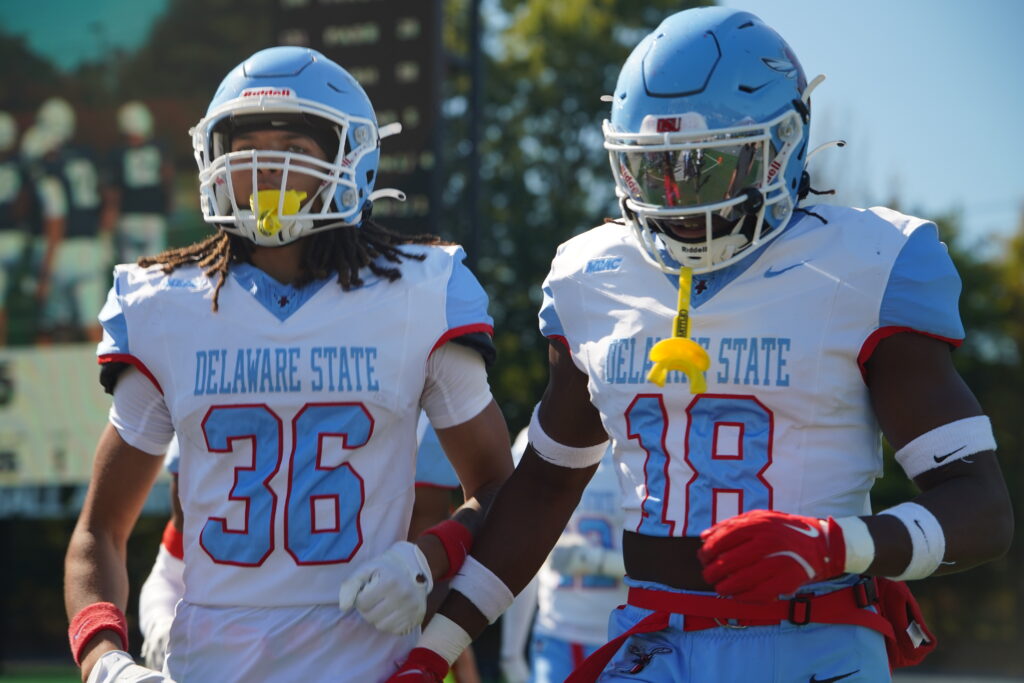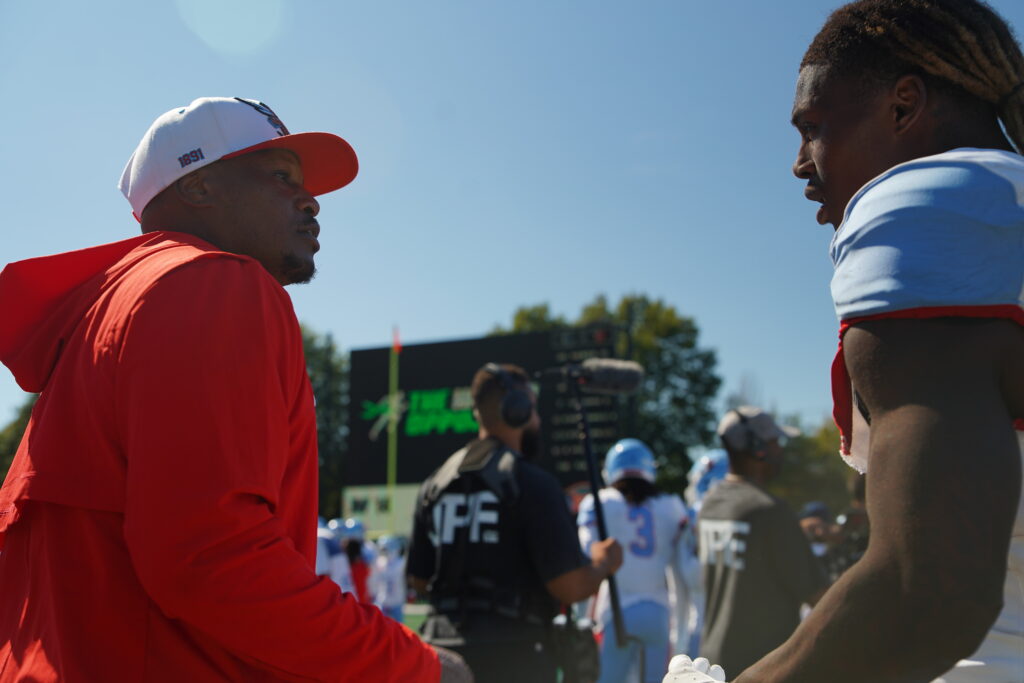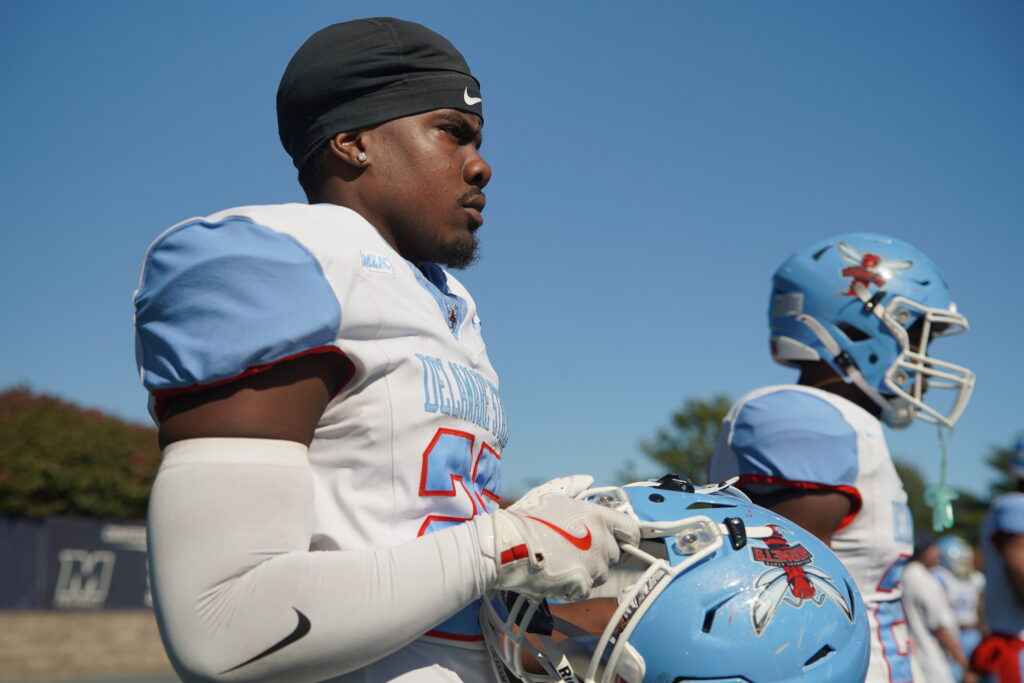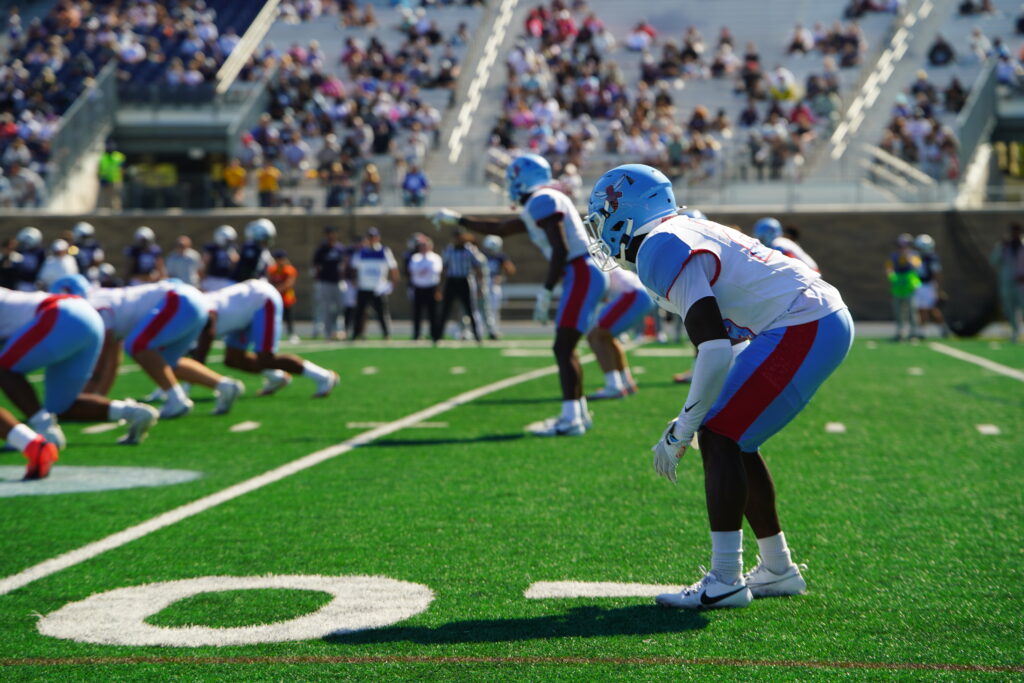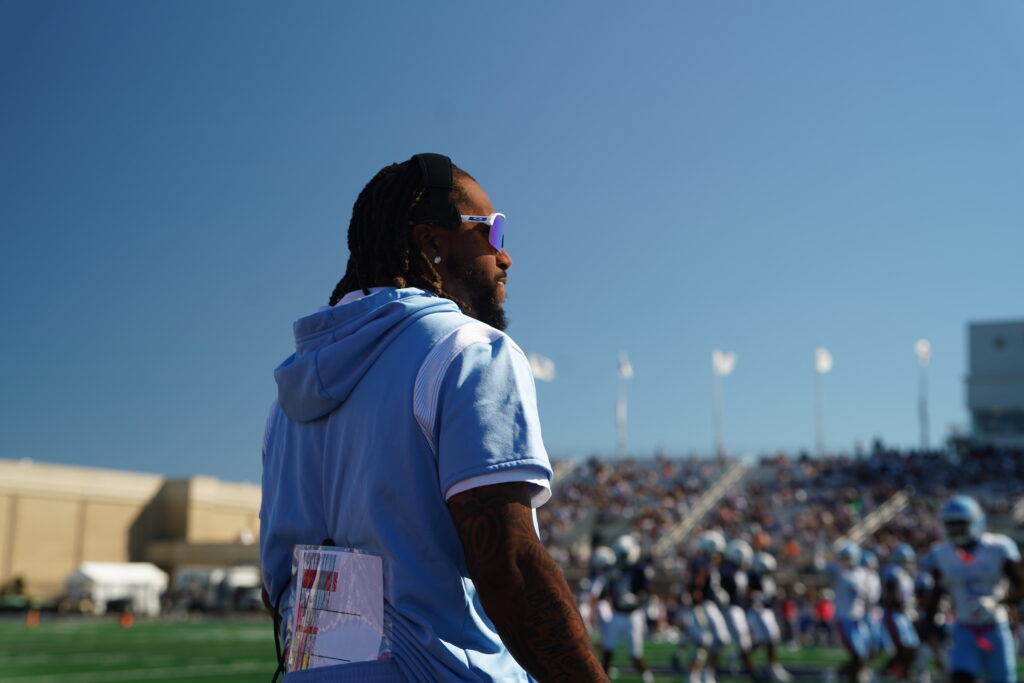HBCU ORIGINAL
HBCU track star wins 100 and 200 at NCAA first round regionals East
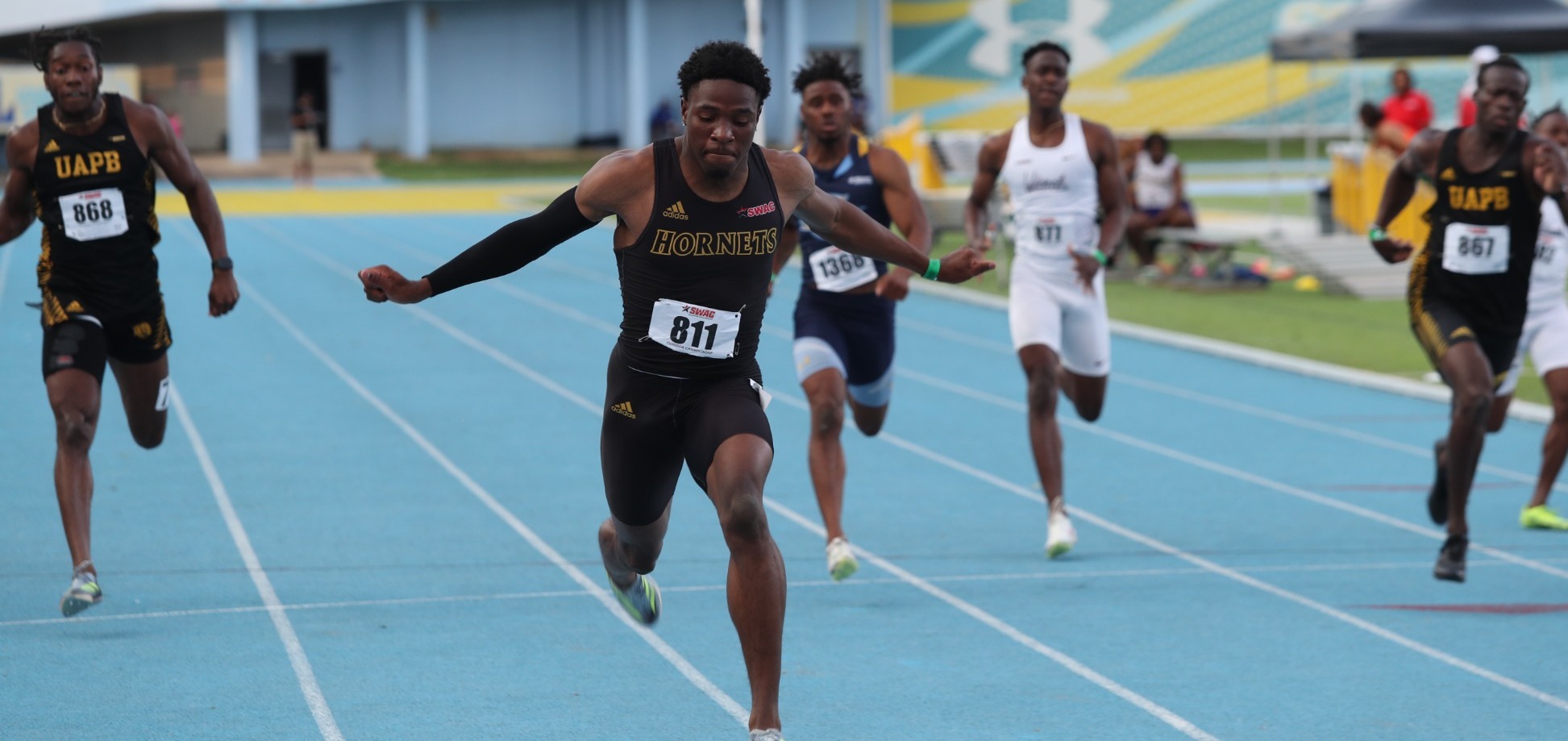
Alabama State’s Jamarion Stubbs won the 100 meters and 200 meters at the 2024 NCAA DI outdoor track and field first round east meet.
We’ve got some electrifying news from the track! Alabama State’s very own Jamarion Stubbs blazed his way to victory at the 2024 NCAA DI Outdoor Track and Field First Round East Meet, clinching gold in both the 100 meters and 200 meters events!
With lightning speed and unwavering determination, Jamarion left his competitors in the dust, crossing the finish line with a burst of energy that had the crowd on their feet! 💨
This remarkable double victory not only showcases Jamarion’s incredible talent and dedication but also solidifies his status as a force to be reckoned with in the world of track and field!
Let’s give a thunderous round of applause to Jamarion Stubbs for his outstanding performance, bringing glory to Alabama State and inspiring athletes everywhere to reach for their dreams with passion and perseverance! #GoJamarion #TrackStar #NCAAChampion 🏃♂️🏅
HBCU ORIGINAL
Divine Nine: The Power of Black Greek Life on HBCU Campuses

Across HBCU campuses, the chants, steps, and colors of the Divine Nine tell a powerful story — one of unity, leadership, and legacy. These nine historically Black Greek-letter organizations have shaped the Black college experience and influenced generations of leaders in education, politics, business, and culture.
Formed during a time when African Americans were excluded from mainstream fraternities and sororities, the Divine Nine built a network of empowerment, scholarship, and service that continues to thrive today.
Here’s a look at their beginnings and where they stand now:
🖤 Alpha Phi Alpha Fraternity, Inc. (1906 – Cornell University)
The first intercollegiate Black fraternity, founded by seven visionary men known as the “Seven Jewels.” Alphas have produced leaders like Dr. Martin Luther King Jr. and Thurgood Marshall. Today, they remain dedicated to scholarship, manly deeds, and love for all mankind.
❤️ Alpha Kappa Alpha Sorority, Inc. (1908 – Howard University)
The first Black sorority, founded by 16 trailblazing women. Known for service and sisterhood, AKAs continue to empower women globally through programs in education, health, and economics. Vice President Kamala Harris proudly represents their legacy.
💜 Kappa Alpha Psi Fraternity, Inc. (1911 – Indiana University)
Built on achievement in every field of human endeavor, Kappas are known for their signature “Kappa Kane” and polished style. They focus on mentoring young men and uplifting communities nationwide.
💛 Omega Psi Phi Fraternity, Inc. (1911 – Howard University)
Founded on principles of manhood, scholarship, perseverance, and uplift, Omegas are known for their intensity, loyalty, and community service — from mentoring youth to promoting education through the Achievement Week program.
💙 Delta Sigma Theta Sorority, Inc. (1913 – Howard University)
Born out of activism, Deltas made history with their first public act — marching in the 1913 Women’s Suffrage Parade. Today, they continue that legacy of advocacy and service through initiatives like Delta Days at the Nation’s Capital.
💚 Phi Beta Sigma Fraternity, Inc. (1914 – Howard University)
Founded on brotherhood, scholarship, and service, Sigmas promote equality and social justice. They are deeply connected with their sister organization, Zeta Phi Beta Sorority, Inc.
💙 Zeta Phi Beta Sorority, Inc. (1920 – Howard University)
Zetas are known for “Finer Womanhood,” scholarship, and service. Their work includes the Stork’s Nest program with March of Dimes and countless community initiatives across the globe.
❤️ Sigma Gamma Rho Sorority, Inc. (1922 – Butler University)
Founded by educators, SGRhos emphasize education, leadership, and community uplift. Their programs support youth development and women’s health initiatives worldwide.
🖤 Iota Phi Theta Fraternity, Inc. (1963 – Morgan State University)
The youngest of the Divine Nine, Iotas emerged during the Civil Rights Movement, embodying brotherhood, citizenship, and leadership. Their commitment to community activism continues to grow across campuses and cities nationwide.

Today, the Divine Nine remain a vital force on HBCU campuses — mentoring students, leading service drives, and strengthening community ties. Beyond step shows and colors, their true power lies in their shared mission: to uplift, educate, and unite.
From classrooms to Congress, from the yard to the world, the Divine Nine prove that when we stand together, we rise together.
#DivineNine | #HBCUPride | #GreekLife | #HBCUOriginal
📺 Visit HBCUOriginal.com | 🎥 Watch more at YouTube.com/@THEHBCUORIGINAL
Campus
The Sound of the Yard: The Legacy of HBCU Marching Bands

When the drums start rolling and the brass section blasts the first note, something magical happens — the crowd rises, feet start stomping, and the stadium becomes a stage. That’s the power of HBCU marching bands — the lifeblood of the yard and the heartbeat of Black college pride.
Across the country, these bands have redefined what it means to perform. It’s not just about music — it’s about precision, power, and pride. Each halftime show tells a story of community, culture, and creative excellence that stretches from the campus yard to the world stage.
Legendary programs like The Human Jukebox of Southern University and The Sonic Boom of the South from Jackson State University have set the tone for decades, known for their dynamic choreography and iconic sound. The Marching 100 of Florida A&M University revolutionized marching band performance with intricate formations and high-energy brass arrangements, influencing college and high school bands globally.
But they’re not alone in this legacy.
-
The Ocean of Soul (Texas Southern University) brings unmatched groove and funk to every performance.
-
The Aristocrat of Bands (Tennessee State University) made history as the first HBCU band to win a GRAMMY Award in 2023 for “The Urban Hymnal.”
-
The Blue and Gold Marching Machine (North Carolina A&T State University) blends traditional sound with modern flair, leading parades like the Macy’s Thanksgiving Day Parade.
-
The Marching Storm (Prairie View A&M University) commands attention with style and showmanship, competing toe-to-toe with any major college program.
-
The Spartan Legion (Norfolk State University) continues to uphold the proud musical traditions of the MEAC and SWAC.
-
The Marching Maroon & White (Alabama A&M University) exemplifies disciplined performance and HBCU pride.
Additional extraordinary programs include:
-
The Trojan Explosion (Virginia State University) — high-energy performances with innovative formations.
-
The Red Sea of Sound (Winston-Salem State University) — signature style and powerful brass arrangements.
-
The Symphony of Soul (Bowie State University) — blending soulful melodies with marching precision.
-
The Marching Force (Hampton University) — a legacy of excellence on every field.
-
Showtime Band (Howard University) — dynamic, creative, and nationally recognized performances.
-
Sound Machine (North Carolina Central University) — a staple of modern HBCU band excellence.
From local parades to the Honda Battle of the Bands, HBCU bands bring an experience that transcends entertainment — it’s cultural storytelling through sound.
Their influence has reached far beyond the yard — from collaborations with Beyoncé’s Homecoming to halftime shows at the Super Bowl. These bands symbolize the discipline, excellence, and creativity that define HBCU culture.
For the students who march, every note is a tribute — to their ancestors, their schools, and the legacy they represent. The sound of the yard will always be more than music — it’s the soul of the HBCU experience.
#HBCUOriginal | #TheSoundOfTheYard | #BlackCollegeCulture | #HBCUBands
📺 Visit HBCUOriginal.com | 🎥 Watch more at YouTube.com/@THEHBCUORIGINAL
Events
20 Players, 2 Coaches Suspended After Fight at Fort Valley State Homecoming Game
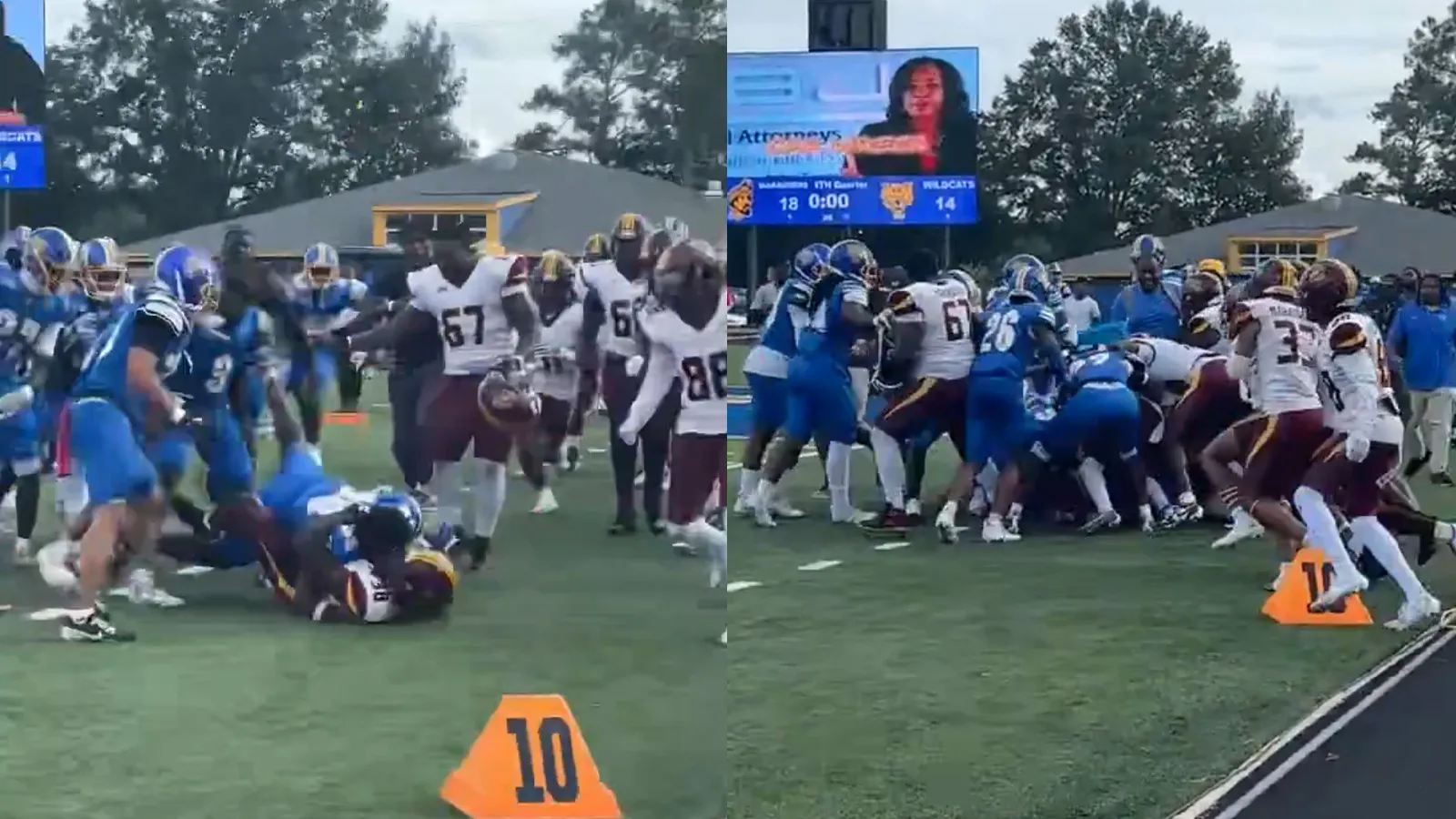
The Southern Intercollegiate Athletic Conference (SIAC) has fined two universities and issued suspensions to 20 players and two coaches following a postgame fight that broke out during Fort Valley State University’s (FVSU) homecoming football game against Central State University (CSU) on Saturday.
According to a statement released Monday, nine Fort Valley State players and 11 from Central State have been suspended for one game. FVSU head coach Marlon Watson and CSU head coach Tony Carter will also serve one-game suspensions. The SIAC did not disclose the amount of the fines issued to either program, citing conference bylaws.
“Acts of unsportsmanlike conduct have no place in intercollegiate athletics or within the Southern Intercollegiate Athletic Conference,” said SIAC Commissioner Anthony Holloman. “I am extremely disappointed that this incident has overshadowed what was otherwise a very competitive football game.”
FVSU, located about 28 miles southwest of Macon, apologized in a statement, saying the fight “does not reflect the values of sportsmanship, integrity, and respect that we uphold as an institution, athletic program, and conference.”
The university added that steps are being taken to ensure athletes understand the importance of representing the Wildcats “with pride and professionalism on and off the field.”
The SIAC said its review determined both institutions violated the league’s code of ethics and conduct. Conference officials emphasized a zero-tolerance policy toward unsportsmanlike behavior and stated they will continue to strengthen measures that discourage such incidents.
A video of the altercation has since gone viral across social media platforms, drawing widespread attention and criticism. The fight marks another controversy for Fort Valley State, which recently faced hazing allegations involving its university band. Several individuals have been arrested in connection with that separate investigation.
“We remain committed to learning from this experience and reinforcing the principles that define what it means to be a Wildcat,” FVSU said.
Campus
The Capitol Battle of the Bands 2025
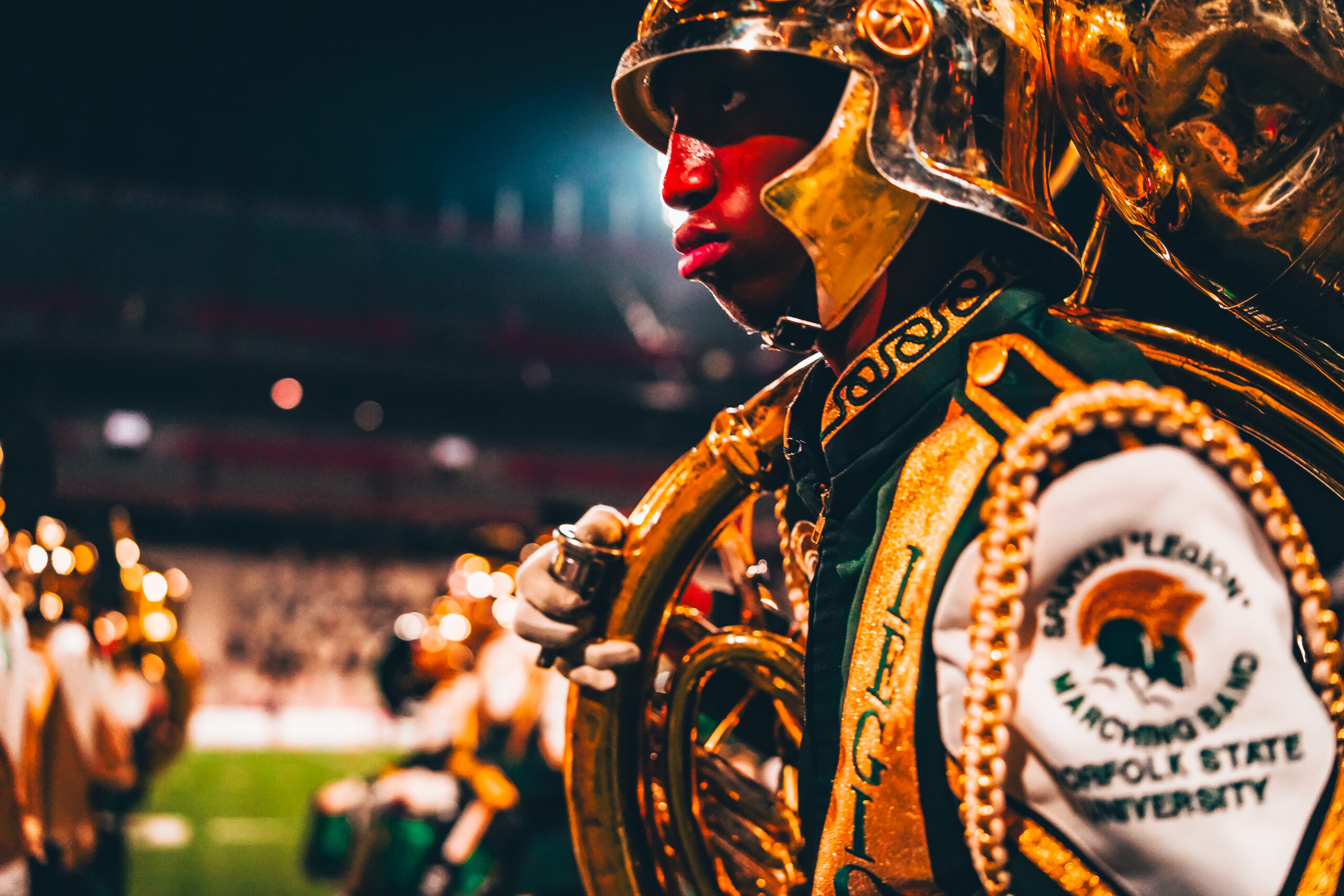
Hosted by High Stepping Nationals | SECU Stadium – College Park, Maryland
The air in College Park was thick with rhythm, pride, and school spirit as the Capitol Battle of the Bands took over SECU Stadium. Hosted by High Stepping Nationals, this electrifying event brought together some of the most dynamic marching bands, drumlines, and spirit teams in the country — all under one roof, all for one culture.
From the first booming drumbeat to the final blast of brass, the stands shook with energy as crowds from across the East Coast gathered to witness HBCU greatness and local high school talent take center stage.
🎶 The Lineup
The field was blessed by the presence of elite bands including:
-
Norfolk State University Spartan Legion
-
North Carolina A&T Blue & Gold Marching Machine
-
Virginia State University Trojan Explosion
-
Winston-Salem State University Red Sea of Sound
-
Bowie State University Symphony of Soul
-
Hampton University Marching Force
-
Howard University Showtime Band
-
North Carolina Central University Sound Machine
-
PGCPS High School Pride, representing the best young talent across Prince George’s County
Each band brought their own flavor — from show-stopping arrangements and precision drills to heart-thumping drumline battles that left the crowd roaring.
💃🏽 The Spirit of the South
The cheerleaders, flag teams, and dance squads elevated the night with unmatched grace and attitude. From the Hampton Force dancers to the WSSU cheerleaders strutting into the stadium, every move reminded the audience that style, pride, and culture are at the heart of every performance.
🥁 The Drumline Faceoff
When Virginia State’s Trojan Explosion Drumline met Norfolk State’s Spartan Legion Drumline on the field, the night hit another level. Beats collided, sticks flew, and the energy was pure adrenaline. This was not just a battle — it was a statement.
🌟 PGCPS Pride
Representing Maryland’s future stars, the PGCPS High School Pride Ensemble showcased young musicians who are already marching toward excellence. Their performance was a reminder that the HBCU legacy is alive and growing strong in local schools.
🎥 Watch the Full Experience
Missed the live show? Don’t worry — you can relive every moment, every note, every move.
📺 Full Highlights: Watch now on YouTube – HBCU Original
🎬 YouTube Channel: @THEHBCUORIGINAL
HBCU ORIGINAL
Delaware State Falls Short vs. Monmouth, 49–38

The Hornets showed heart from start to finish, going toe-to-toe with Monmouth in a high-scoring contest that ended 49–38. Despite the loss, Delaware State displayed major offensive firepower and resilience on the road.
🏈 Game Highlights:
-
Marquis Gillis was unstoppable on the ground, rushing for 132 yards and a touchdown, setting the tone early for the Hornets’ offense.
-
Quarterback James Jones powered in a short rushing score, keeping the Hornets within striking distance.
-
The Hornet defense battled to contain a hot Monmouth offense led by Derek Robertson, who threw for four touchdowns — but Delaware State never backed down.
🔥 What’s Next:
Delaware State looks to carry this momentum into MEAC play, building on its offensive rhythm and toughness heading into the next matchup.
#MEACFootball #DelState #HBCUFootball #HornetPride #HBCUOriginal
-
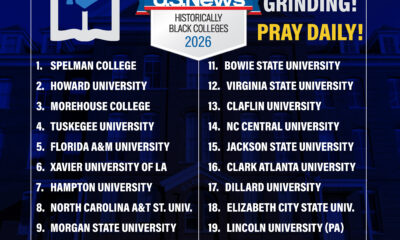
 Campus2 weeks ago
Campus2 weeks ago🏆 2026 U.S. News & World Report — Top HBCUs
-

 Events4 weeks ago
Events4 weeks agoTrump Directs Millions to HBCUs and Tribal Colleges Amid Broad Education Cuts
-
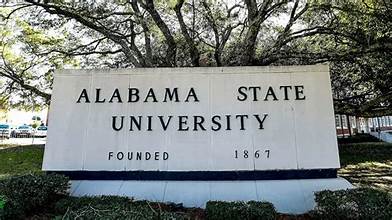
 HBCU ORIGINAL4 weeks ago
HBCU ORIGINAL4 weeks agoHBCUs Lift Lockdowns After Threats Prompt Class Cancellations
-

 HBCU ORIGINAL1 week ago
HBCU ORIGINAL1 week agoDelaware State Falls Short vs. Monmouth, 49–38
-
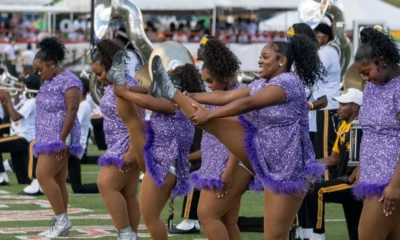
 Events1 week ago
Events1 week agoSWAC Fines Florida A&M $10K, Suspends PA Announcer After Game Day Drama
-

 Campus1 week ago
Campus1 week agoForged in Faith, Renamed for Freedom: The Lincoln University Story
-
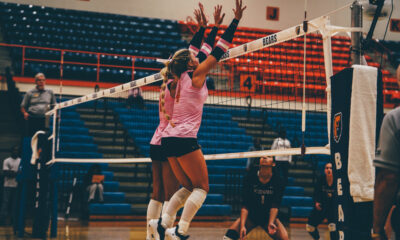
 Sports1 week ago
Sports1 week ago“Morgan State Comes Back to Defeat North Carolina Central University in Five-Set Thriller”
-
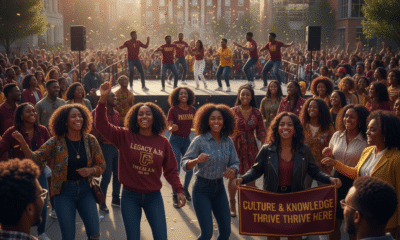
 Campus1 week ago
Campus1 week ago“Navigating Identity at HBCUs: Where Culture Meets Academic Excellence”
